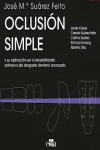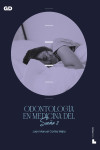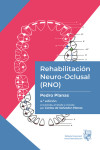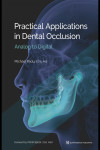OCCLUSAL SPLINTS FOR PAINFUL CRANIOMANDIBULAR DYSFUNCTION
Schindler, H. Türp, J.
Datos técnicos
- ISBN 9780867157956
- Año Edición 2022
- Páginas 140
- Encuadernación Tapa Dura
- Idioma Inglés
Sinopsis
Therapy for painful craniomandibular dysfunction (CMD) is a field of dentistry that is quite different from traditional subjects in dental medicine (eg, periodontics, restorative dentistry, or oral surgery). In these subject areas, innovation essentially means adapting clinical procedures to new technologies, such as the use of digital resources. However, better basic treatment of CMD cases cannot be achieved simply by better technique but by a new way of thinking that emphasizes patients, their suffering, and what they tell their dentists. Therefore, this book offers a clear guide to help practitioners address the issue of CMD in theory and practice and provide their CMD patients with the best possible treatment. The book is split into two parts: first a practical guide to the basic treatment of CMD patients, followed by chapters that build on that basic knowledge by exploring scientific and theoretical principles in more depth. The two parts complement each other to form a rounded and complete picture. A series of detailed charts, diagrams, and sample forms are included to supplement the important history-taking section, and chapters on splint fabrication and rehabilitation include step-by-step photographs. The book concludes with chapters on neurobiology to discuss CMDs and their treatment at an anatomical level for a more thorough understanding.
Índice
Part A: Practice of Occlusal Splint Therapy and Coordinative Training
1. Introduction
2. Structured Treatment Approach in Practice
3. Interocclusal Registration in Splint Therapy
4. Splint Fabrication
5. Coordinative Training for Functional Rehabilitation
Part B: Aspects of Painful CMD and Splint Therapy Explored in Depth
6. Risks
7. Diagnostics
8. Treatment
9. Neurobiologic Background of Occlusal Splint Therapy
10. Neurobiology and Biomechanics of Occlusal Splint Therapy
11. Cerebral Representations of Occlusal Splint Therapy: Functional MRI Studies
Otros libros que te pueden interesar
- ¿Quiénes somos?
- Gastos de envío
- Política de privacidad
- Políticas de devolución y anulación
- Condiciones Generales de contratación
- Contacto
2025 © Vuestros Libros Siglo XXI | Desarrollo Web Factor Ideas










